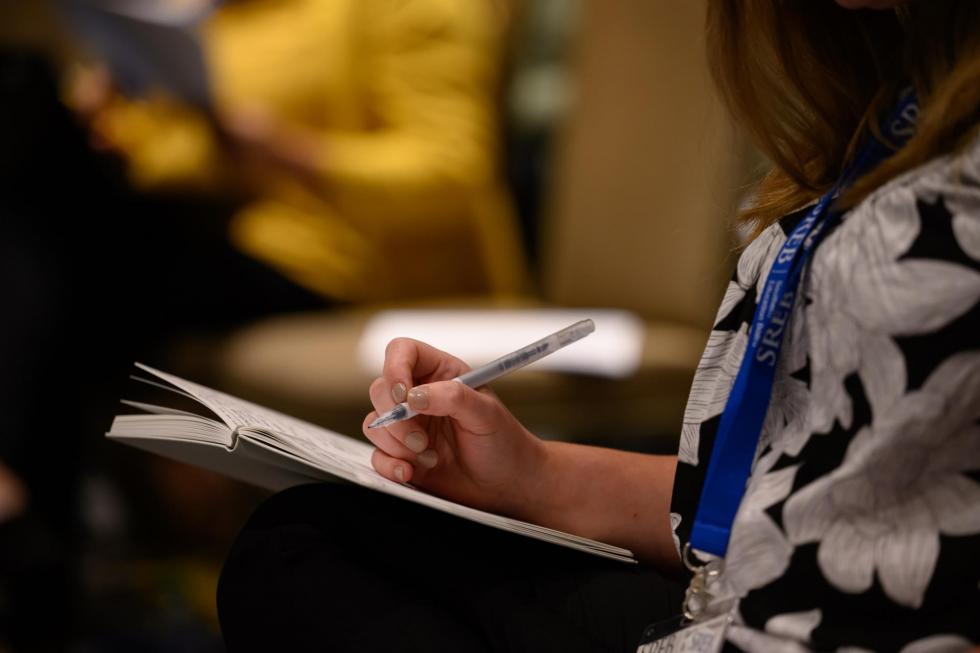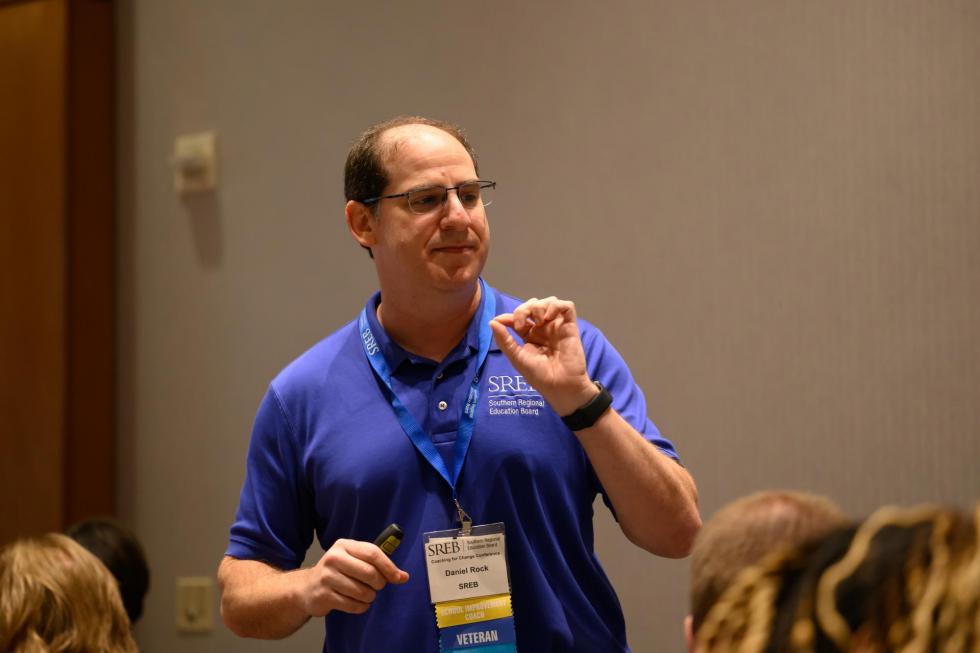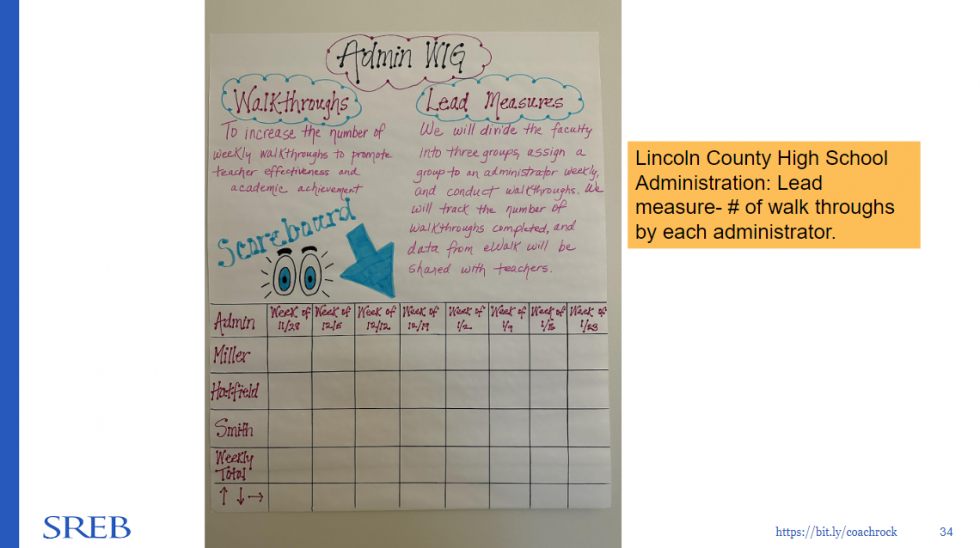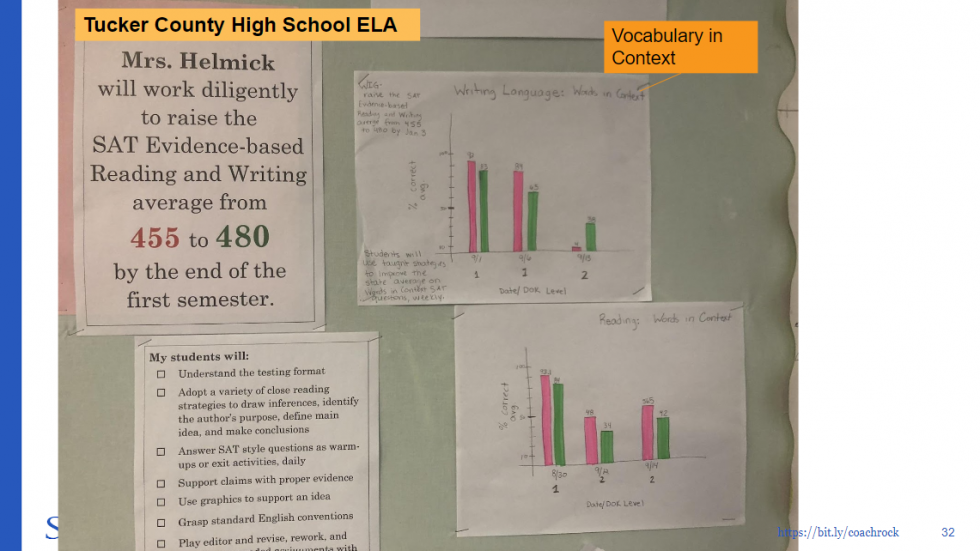“WIG” Out With Daniel Rock: Tips on Using Data Effectively
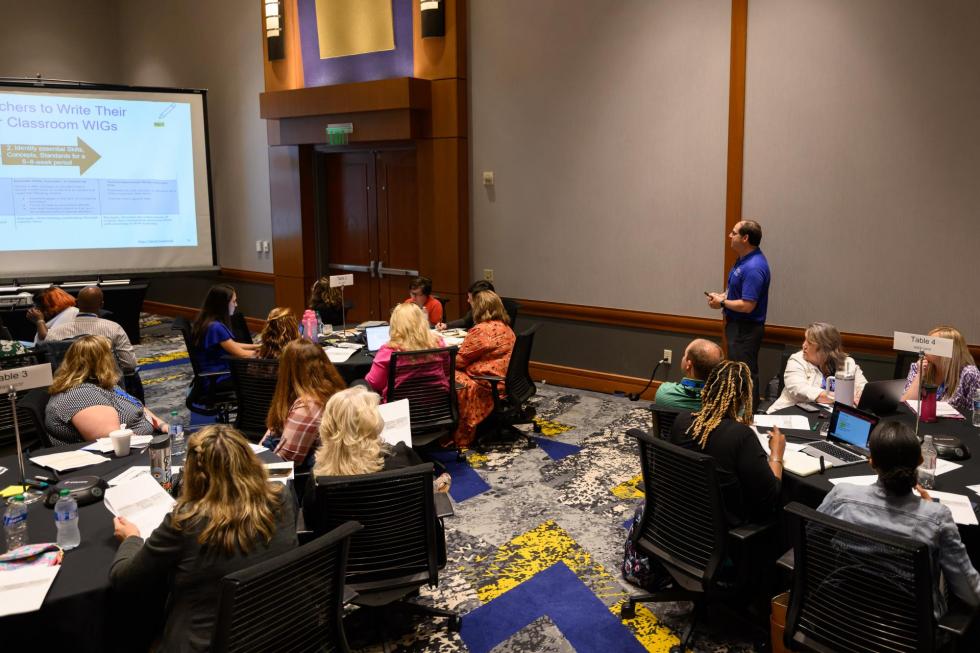 In the first two posts of this
4-part series on the 2023 Coaching for Change Conference, we’ve
talked about general
coaching tips and
ways to make your teachers feel appreciated. This week, we
are moving onto something a little bit more complex: data.
In the first two posts of this
4-part series on the 2023 Coaching for Change Conference, we’ve
talked about general
coaching tips and
ways to make your teachers feel appreciated. This week, we
are moving onto something a little bit more complex: data.
However, don’t let that scare you! In Daniel Rock’s session “This Is Not a Test!” he presented the English teacher’s version of data. In other words, everyone will be able to follow along regardless of your comfort level with things like numbers and logic.
Learning from a Big WIG: Setting Goals That Work
One of the first things that Daniel did in his presentation is talk about how to create wildly important goals (WIGs). This is a term that came from the book The Disciplines of Execution, written by Chris McChesney, Sean Covey and Jim Huling.
The idea behind a WIG is to help you focus on and monitor the goals that matter the most to you. Or, as Daniel put it, “What achievement will make everything else seem secondary?” That achievement is your WIG, and this is the process of how to get there.
Let’s stop and fill-in a MAD LIB for a second:
“I will increase/improve [put an important/measurable goal here] from [where it is now] to [where you want it to be] by [future date].”
Did you play along with me? If so, congrats! You didn’t know it, but you were actually completing your first WIG. (Okay, okay. You probably did realize what was happening.)
That’s all it takes. Let’s look at some examples, though.
Here is one Daniel did in his presentation: “I will increase the total number of books my child reads from three books last year to 12 books by Dec. 31.”
Here is one I created during the session: “I will increase the number of vacations I go on from one last year to two by the end of the year.”
The idea behind these is you should be able to give yourself some concrete steps to take that will lead you to your desired goal.
What Does This Have to Do With Coaching?
As the examples from the session demonstrate, WIGs aren’t exclusive to your job as a coach. However, they can be used to help you help your teachers reach their own work-based goals.
Let’s look at some ways that you can help teachers create some instructional WIGs to use in their own classrooms that can also be aligned to school-wide WIGs.
- Step 1: Figure out the goal you want to focus on. (Daniel’s example here was to help improve literacy by seeing a 10% increase in the standardized test from last year’s scores.)
- Step 2: Identify a step you can take in a 6-8-week period that will help accomplish that overall goal. (For the example above, this might mean helping students recognize vocab words through context clues.)
- Step 3: Write a teacher/team WIG that helps reach that goal. (Increase correct context clue assessment questions from 50% accuracy to 80% accuracy by the end of the 6-week period.)
So now that you know how to create better goals, let’s talk a little bit more about how to measure these goals.
Following the LEADer: Measuring Goals the Right Way
So, you’ve set your WIG. Now what?
According to Daniel, the next step is to determine lead measures to track it.
“What’s a lead measure?” you ask. Well, it’s the opposite of a lag measure. That clears it up for you, right?
No?
Let’s see if I can do better.
Let’s say you want to learn another language so you make your WIG “be fluent in Chinese by Christmas.”
You can measure your success by how fluent you are at the end of that time or at set measurement points. However, that is a lagging measurement. You won’t know if you are succeeding or not until the date is past. You use lag measurements to analyze past performance. However, to really track success, you need to find a way to measure future performance.
This is where leading measurements come into play.
What action(s) can you measure that will likely lead to that ultimate goal?
In the case of the language goal, maybe you can measure how many vocabulary words you studied or how many sentences you read in a book in the language without needing to check the translation.
If you can say, “I learned 5 new words and read 10 sentences in a row without needing a translation,” then you can be better assured that what you are doing will lead into the results you want.
Basically, you want to find something to track that is in your immediate control.
Okay. But Once Again, What Does This Have to Do With Coaching?
When you are working with your teachers, you want to help them create actionable goals that they can measure through leading, not lagging, measurements.
If the goal is to increase the amount of correct context clue assessment questions that the class gets right from 50% accuracy to 80% accuracy by the end of the 6-week period, then the lagging goal is improved accuracy on the test.
What are some leading measurements you can track to better ensure that goal is reached, though?
Here are some examples:
- Read a weekly story filled with made up words that the class “defines” based on the rest of story.
- Take a practice test every couple of weeks to make students more comfortable with the test format.
The idea behind the measurements is that they should be in the teacher’s control and should be good predictors of success on the WIG.
In other words, the teacher can’t force the student to study and do well on a test. They also can’t take the test for them. However, they can do set things in class that are likely to lead to a student doing well.
When you work with your teachers, this is the type of measurement that you want to help them track.
Let’s Settle the Score (Board): Track Your Goals Visually
Now that you know how to set goals and measure them, let’s talk a little bit about how you’ll keep them front and center: with a scoreboard.
Putting your WIG on a score board and measuring your lead indicators there is both fun and useful. If you see it every day, you’ll be motivated to keep up with it. However, it also adds a little bit of gaming to the process, which takes it away from being a task and makes it more enjoyable.
Here is what Daniel said about creating a score board:
- Keep them simple.
- Put them in a visible space.
- Include the lag (the “from X to Y by date”) and the lead measure.
- Make it easy to tell if you are succeeding at just a glance.
- Assign yourself (or the team if this is a team effort) the job of creating/updating the board.
- Do not put personal data on the board.
In the session, we also looked at a few of the boards, so I included a couple here for you.
We’re Almost Through, But Keep Your WIG On
The last point that Daniel made was to keep yourself accountable through regular meetings where you do all of the following:
- Report on last week’s commitments.
- Review your score board for any successes and failures.
- Plan your next commitments.
Here are some rules your meetings should follow:
- Hold it on the same day/time each week.
- Focus on the WIGs. Don’t let in distractions.
- Keep it to 20-30 minutes.
You can see Daniel’s full presentation or take advantage of the many handouts he provided here. Alternatively, check out our conference page to get updates on the 2024 Coaching for Change Conference.
And if your current WIG is to increase the number of articles you’ve read about the 2023 Coaching for Change from just this one to three, then you are in luck: You can read our first two posts with tips on coaching and encouraging teachers.


